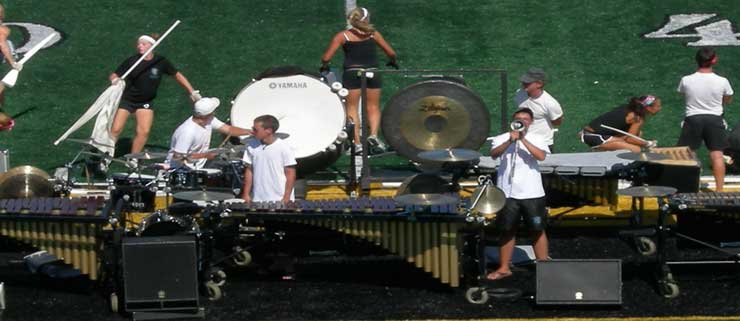Teaching Clarinet Students To Bust Through The Break!
In the eyes of many beginning musicians clarinetists often seem to have the easiest time learning to play their instrument during the first few weeks or months of lessons. Then, when all seems well with the world, they finally reach the very bottom range of their instrument, using all ten fingers at the same time. At this point their teacher decides to take them to the next level and suddenly asks them to "Cross The Break!" Depending on many factors this may be the beginning of a long, happy musical adventure or the beginning of the end for the student as a clarinetist.
In clarinet terms, crossing the break refers to the act of going from having very few fingers down (to play open G or first finger A for example) and then going up one more note to the B, C, or D above. This requires a clarinetist to go from having one finger down to having all of their fingers down. While many beginning clarinetists will try to avoid these notes at first, it is not something that can be avoided as moving from A to B is one of the most common sequences that any clarinetist will encounter due to its place in the B-Flat Concert Scale.
Common High Range Problems and Pitfalls:
For those that have been properly prepared and have paid very close attention to details such as embouchure and finger position crossing the break can be quite easy. For others, crossing the break may signal the beginning of many months of frustration and perhaps even lead to considering giving up on the instrument entirely. For teachers, especially those that are not native clarinetists, teaching a student to cross the break can be just as frustrating to them as it is to the student. The vast majority of collegiate music education programs focus on clarinet for a few short months at most and then the teacher is thrown out in the cold to care for his or her young wards without truly being comfortable with the best methods and tricks to use when teaching beginning clarinet students.
Learning to play the clarinet, including the high notes is no more or less difficult than learning to play any of the other musical instruments in the school band or orchestra. In fact, learning to play any instrument can be quite easy if the basic fundamentals and techniques are followed as closely as possible during the early weeks of learning the instrument. The good (or bad) habits that a student learns and instills in their mind and muscles will have more to do with how easily they progress than will any other variable. One student can practice for hours each week and not seem to get any better while another student can get by on an hour of practice each week and finish their first lesson book in five months or less.
To play the clarinet well and to cross the break easily all begins with learning and focusing on the basics of finger position, embouchure, and properly maintained and assembled equipment.







 Scroll down to view the comparison chart of over a dozen different portable digital audio recorders.
Scroll down to view the comparison chart of over a dozen different portable digital audio recorders.
